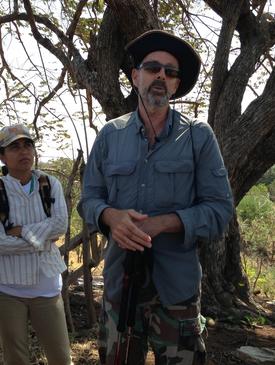Ecosystem Services and Tropical Forest Restoration
Summary
Understanding the fundamentals of forest ecology and the use of tropical forests is indispensable for managing the provision of environmental services in a sustainable manner in highly fragmented landscapes. While in recent years valuable information on these themes has been generated via a range of research projects, this information has not been effectively communicated to the people who manage and influence these landscapes. In Panama and Latin America, there is a great need for training opportunities to help guide informed decision making about the management, use and restoration of tropical forests. Since 2006, the Environmental Leadership and Training Initiative (ELTI) has been facilitating various conferences and training courses in order to provide different stakeholders with the knowledge and tools on how to conserve forests and biodiversity in tropical Latin America and Asia.
Over a period of five days, this course aims to provide the technical basis necessary to design and implement restoration strategies which increase the provision of ecosystem services in different land uses. It has been designed to convey advances in ecology and restoration of environmental services to professionals and technicians working in government institutions, NGOs and the private sector, through a series of presentations, discussion sessions and field based exercises. Foresters, agronomists, veterinarians or related, contractors, consultants and other working groups involved in land management projects, reforestation and natural resource management in Panama and other countries in Latin America are encouraged to attend.
Content
Module 1. Basic forest ecology and the supply of environmental services
- Introduction to dry forests of Central America (geology, soils, hydrology, forest dynamics, forest succession)
- Introduction to tropical dry forests dynamics, forest succession, and natural regeneration (contrast with tropical wet forest)
- Forest's goods and ecosystem services (focused on the dry forests)
- Field trip #1: Observation of riparian areas, floristics, forest dynamics, forest gaps, arrested forest succession, and social values (ES) of trees in mature and secondary forests
- Field trip #2: Exercise in the tenth hectare-gridded plots, where teams will measure: floristics, diversity, soils, carbon, etc.
Module 2. Limitations for restoration and the provision of environmental services
- Degradation of tropical forests (What is degradation, types of degradation, levels of degradation) - Ecological effects of degradation
- Regional introduction to dry forest degradation drivers
Module 3. Strategies for the restoration of environmental services in human-modified landscapes
- Importance of defining your management goals and knowing your site conditions when developing a restoration strategy
- Principles and methods of forest restoration (Passive)
- Field trip #3 Madroño Property: Observation of passive restoration via forest structure and composition of different successional states in secondary forest, floristic change in relation to legacy structures, succession processes of secondary growth stem exclusion
- Case Study #1: PRORENA trials data presentation (planting/provenance trial and results)
- Case Study #2: AEP's GIS work in developing a strategy for restoration of biological corridors
- Principles and methods of forest restoration (Active)
- Field trip #4 IDB Forestal: Observation of active restoration involving diverse landscape use, unique social values of foreigners, matching species to site context, and potential for passive restoration techniques
- Introduction to tropical silvopastoral systems as a restoration tool
- Case Study #3: APASPE Ranchers Association: Silvopastoral system (SPS) and riparian reforestation project presentation by the Association of Livestrock and Agro-Silvopastoral Producers of Pedasí (APASPE)
- Field trip #5 Climaco Barrios Farm: Observations and exercises in an intensive SPS and riparian restoration buffer zone


